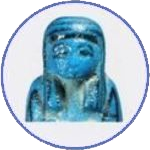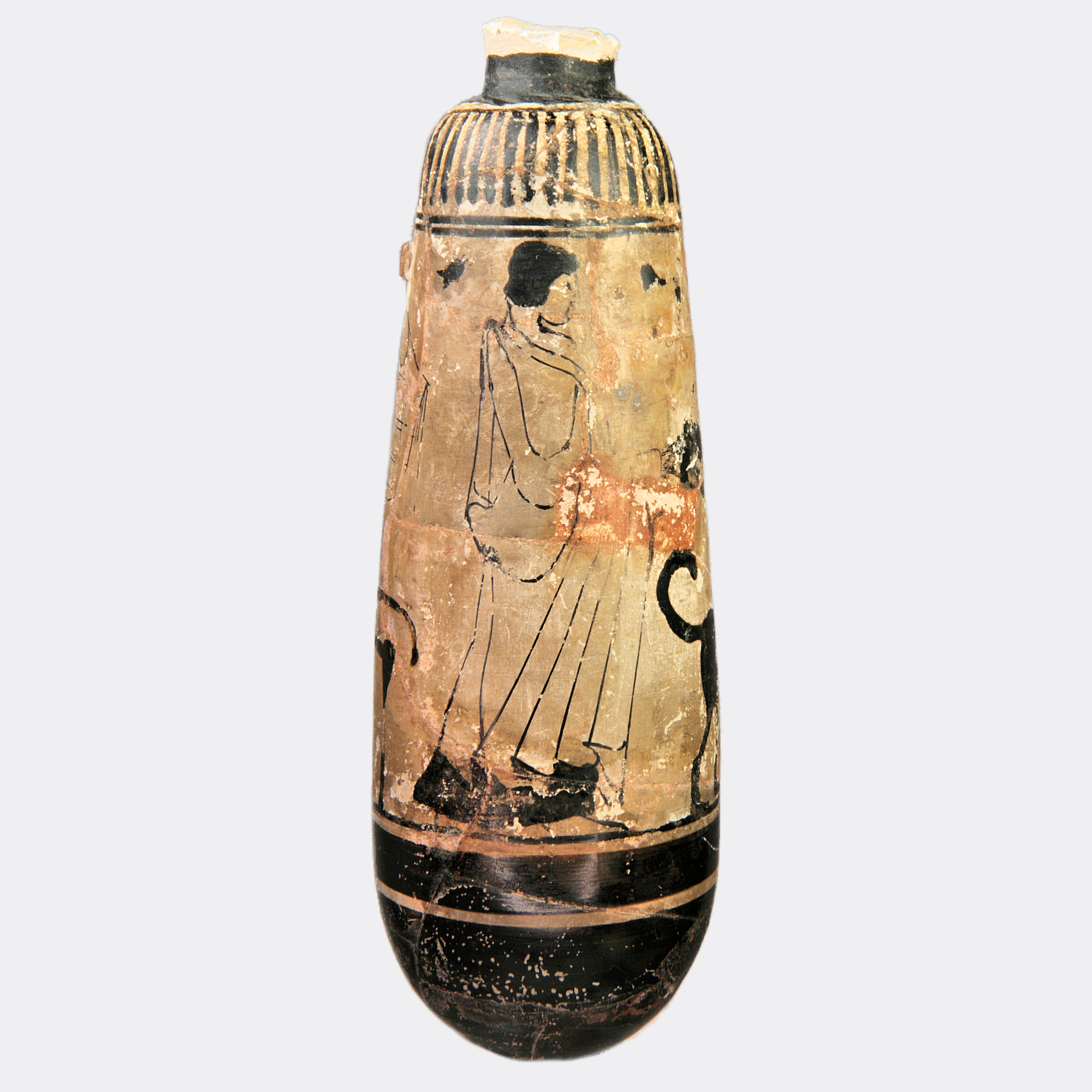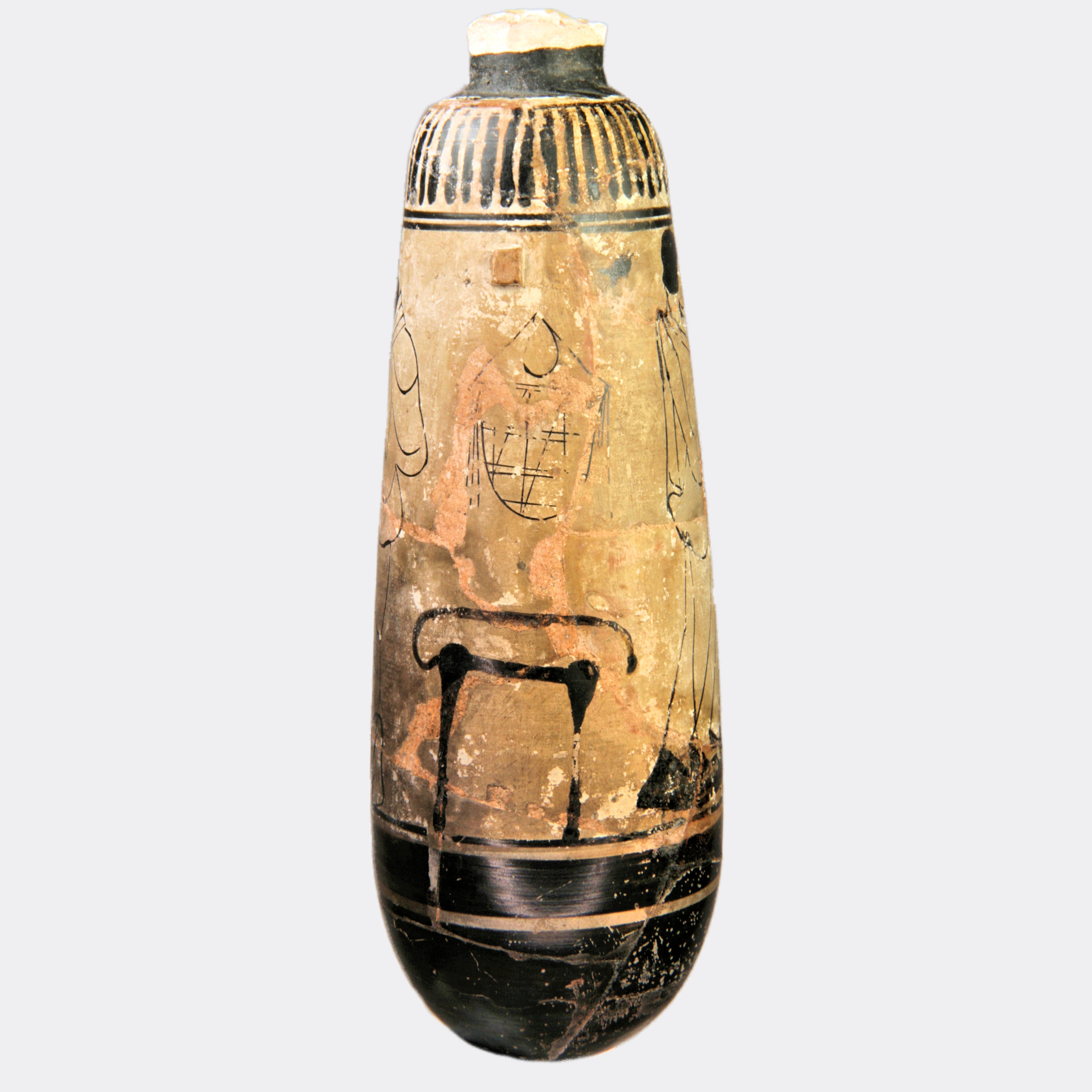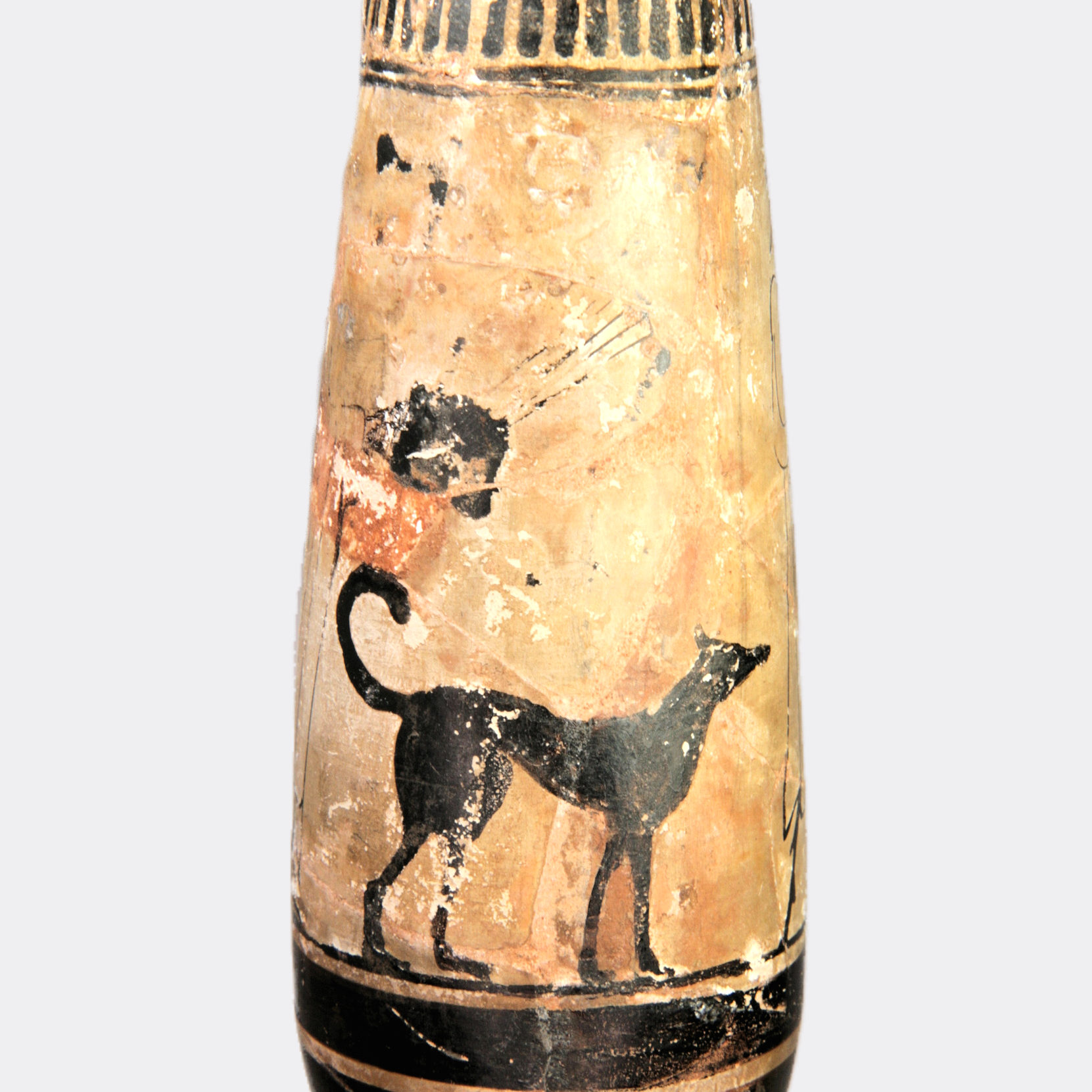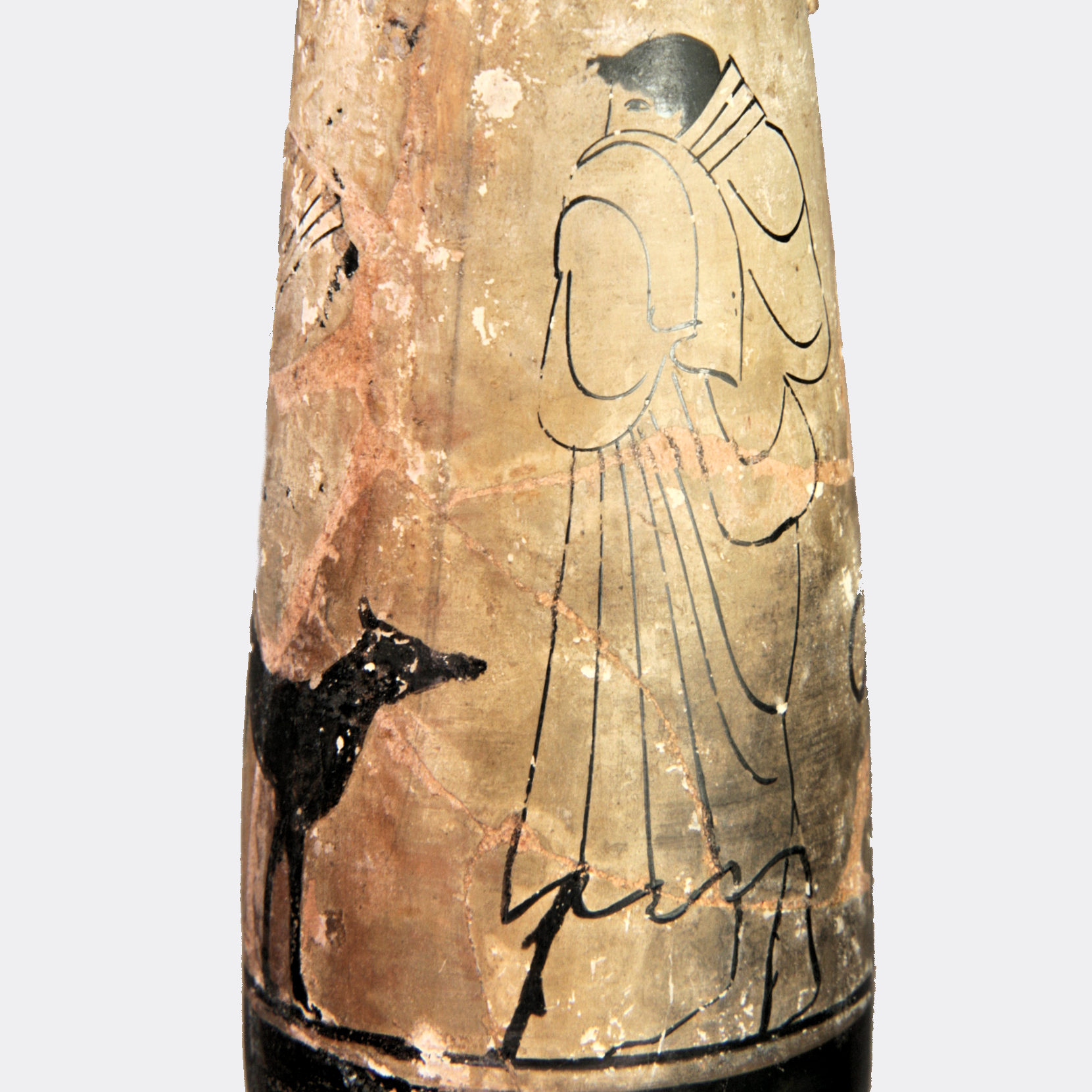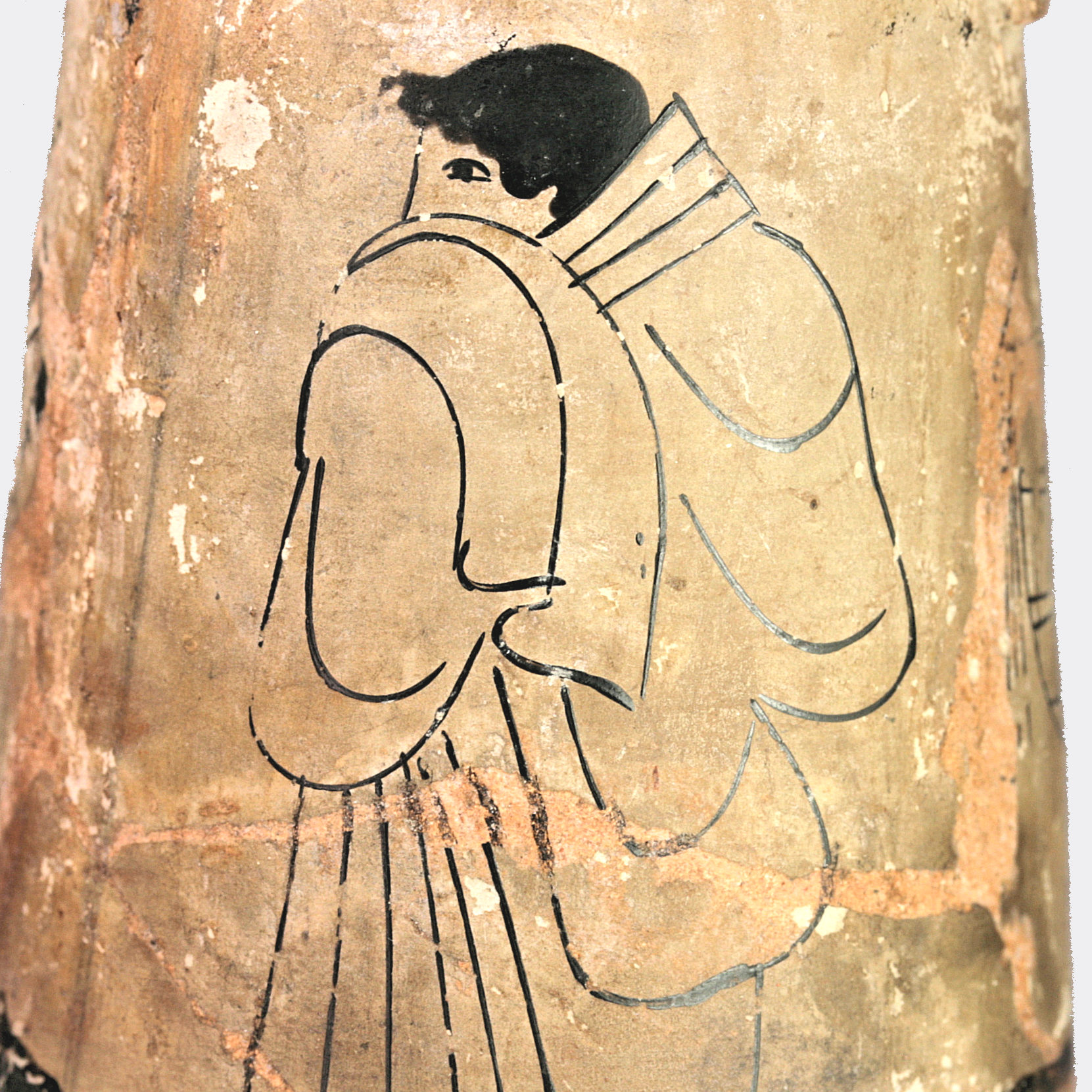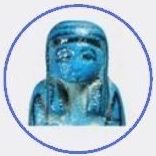Greek white ground alabastron depicting the return of Odysseus
G429£6,000.00
Available
A very fine and rare white ground pottery alabastron painted in outline technique with black linear decoration. The body is painted with a depiction of Odysseus returning to his wife Penelope after the Trojan War disguised as a beggar in order to avoid assassins. Odysseus is recognised by his old and neglected hunting hound Argos but heart-breakingly he is unable to greet the faithful dog when they pass in case he is discovered.
Odysseus is depicted as a beggar leaning on a staff and covering his face with his cloak as he looks towards Penelope and Argos looks towards him. Penelope is shown holding a stringed instrument which is probably a loom. In Odysseus’ long absence his wife refused to re-marry by telling suitors she would only wed once she had finished weaving (and then famously unpicked her work each night for years in order to evade completion). A chair and a basket of wool hang behind the figure of Queen Penelope.
Odysseus, protagonist of the Odyssey and participant in the Trojan War, is among the most famous and poignant of ancient Homeric heroes yet depictions of his travails are surprisingly rare in Greek art and depictions of his return to Ithaca are extremely rare.
White ground alabastra are an uncommon genre of Greek vases and were often decorated by the leading painters of their day. This example is painted with simple yet perfect lines rendering this famous and eternal myth in an aesthetic and uncomplicated complete single scene.
Culture
Greek, Athens, end of 6th to early 5th Century BC
Size
15.6 x 5.3 cms
Condition
Disc rim, neck and part of shoulder lost, repaired from numerous fragments with areas of restoration. The old restoration has a slightly pink tone and is generally quite easy to see in the photographs. Clearly this vessel would benefit enormously from professional restoration.
Provenance
Ex. estate of Professor Xenia Muratova (1940-2019), Paris, France. Professor Muratova was an art historian, author and lecturer specialising in Medieval art and archaeology.
“As they were speaking, a dog that had been lying asleep raised his head and pricked up his ears. This was Argos, whom Odysseus had bred before setting out for Troy, but he had never had any enjoyment from him. In the old days he used to be taken out by the young men when they went hunting wild goats, or deer, or hares, but now that his master was gone he was lying neglected on the heaps of mule and cow dung that lay in front of the stable doors till the men should come and draw it away to manure the great close; and he was full of fleas. As soon as he saw Odysseus standing there, he dropped his ears and wagged his tail, but he could not get close up to his master. When Odysseus saw the dog on the other side of the yard, dashed a tear from his eyes without Eumaios seeing it, and said:
‘Eumaeus, what a noble dog that is over yonder on the manure heap: his build is splendid; is he as fine a fellow as he looks, or is he only one of those dogs that come begging about a table, and are kept merely for show?’
‘This dog,’ answered Eumaios, ‘belonged to him who has died in a far country. If he were what he was when Odysseus left for Troy, he would soon show you what he could do. There was not a wild beast in the forest that could get away from him when he was once on its tracks. But now he has fallen on evil times, for his master is dead and gone, and the women take no care of him. Servants never do their work when their master’s hand is no longer over them, for Zeus takes half the goodness out of a man when he makes a slave of him.’
So saying he entered the well-built mansion and made straight for the riotous pretenders in the hall. But Argos passed into the darkness of death, now that he had fulfilled his destiny of faith and seen his master once more after twenty years”.
—Homer, Odyssey, Book 17, lines 290-327
